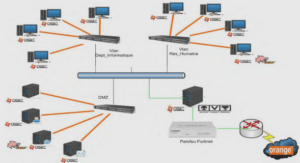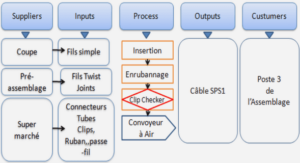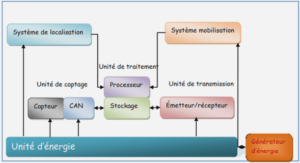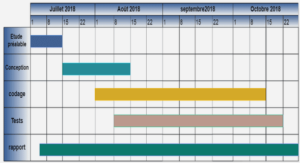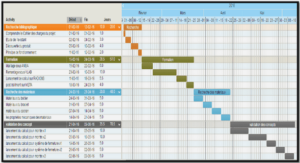Procedure for biodiversity and abundances analysis
The pea leaf weevil, a significant pest of legume crops
Among main pests of faba bean in France may be found several fungal pathogens like Ascochyta fabae or Botrytis fabae, nematodes as Ditylenchus dipsaci and viruses as BLRV (Bean leaf roll virus) and BYMV (Bean Yellow Mosaic Virus). The broomrape species of parasitic plant Orobranche crenata is also a common problem for faba bean crops in France (ARVALIS – Institut du vegetal, 2013). Concerning arthropods, faba bean faces over 70 species of pests all over the world (Stoddard et al.,2010). Several common insect pests may cause significant damages to faba bean. The black bean aphid Aphis Fabae (Hemiptera: Aphididae) forms dense colonies affecting plant growth and flowering due to the action of toxic saliva and vectoring plant viruses. The bruchid species Bruchus rufimanus (Coleopera: Bruchidae) is another worldwide pest of faba bean. The complete larval development takes place inside the seed, reducing yield mass, quality and affecting germinative properties. And finally, Sitona lineatus L. (Coleoptera: Curculionidae) , commonly known as the pea leaf weevil, the species constituting the focus of this study.
Agroecological pest management
Agricultural systems face with the major challenges of climate change, human demography, sustainability and health. This advocates a paradigm shift away from conventional intensive systems to a new model for agricultural production. Innovative cropping systems must stay productive and with more socio-economic benefits, but natural resources must be preserved and healthy ecosystems and human well-being must be guaranteed.
Agroecology is defined by the FAO* as the scientific discipline that studies how different components of the agroecosystem interact. According to this organisation, agroecology can support food production as well as food security and nutrition while restoring the ecosystem services and biodiversity that are essential for sustainable agriculture. Therefore, agroecology emphasizes on the incorporation of ecological principles into pest management and, at the same time, ensures high productivity and profitable harvests without causing harm to the environment (Wang, 2014).
In order to design sustainable pest management strategies for the pea leaf weevil, a deep understanding of the species ecology and its interactions with its natural enemies is needed. Thereafter, efficient agroecological methods of crop protection should be developed via conservation biological control (Vankosky et al., 2010).
PCR molecular gut-content analysis
It has been over six decades now since biochemical techniques were first used to detect arthropod prey-predator relationships in the fields from predators’ stomach content analysis (Boreham and Ohiagu, 1978). Most efficient traditional methods were based on the development of specific monoclonal antibodies against the prey (Boreham and Ohiagu, 1978; Sunderland, 1988; Greenstone 1996). Serological techniques, despite being satisfactorily sensitive and specific, remain long, complex and expensive (Greenstone et al., 1996). These days it is widely accepted that molecular PCR-based techniques for tracking predator-prey interactions in field studies constitute a versatile, reliable and efficient method (Agustí et al., 1999; Zaidi et al., 1999; Chen et al., 2000; Symondson, 2002; Harper et al., 2005).
When targeting a single species of prey, a PCR can be performed using a specific primer against the target prey DNA. This technique is nowadays increasingly being used in agroecological studies for identifying trophic links between insect pests and their natural enemies (Wolf et al., 2018; Albertini et al., 2018; Peterson et al., 2018), the final goal being to unravel the trophic basis from which future efficient conservation biological control strategies will be developed. For S. lineatus, only Harper, King et al. (2005) carried out gut-content molecular analysis for its detection into predators’ guts. They developed a multiplex PCR-based rapid screening system capable of being used for the simultaneous detection of a large number of preys (including the pea leaf weevil).
Crop growth and pest damages on faba bean fields
The beginning of spring was very rainy, saturating the soil where roots were not able to grow normally. This was especially true in the center of the fields where faba bean plants were consistently smaller than near the field border, with an average height of 81.2±15.9cm (sd) and 94.3±16.6cm in mid-May, respectively. This growth gap did not affect the development of faba beans. Indeed, the number of counted leaves grew similarly in the two crop types and the two spatial plots throughout the season, from 5.2±1.1 leaves on March 29 to 18.7±2.8 on May 14. The phenological stages (flowering start, last flower and first pod>2cm) were also observed synchronously. The flood hampered cereal growth in intercropped fields where the cereal cover occasionally appeared sparse and heterogeneous.
Predators biodiversity and abundances
The analysis of biodiversity and abundance was based on arthropods captured from March to May 2018. From the large amount of arthropods collected we have classified for now 1018 predators, distinguishing between them 580 carabid beetles, 347 spiders, 61 rove beetles, 11 harvestmen, 8 centipedes, 10 earwigs, and 1 ladybug . A much greater amount of predators waits until identification and quantification for being included in further analysis.
Preliminary results in number of individuals collected show 7 predominant groups of carabid beetle species and three groups of spiders. For carabid beetles, the most abundant species is Poecilus cupreus (213 field-collected individuals), followed by Anchomenus dorsalis , Brachinus sclopeta, Nebria salina , the genus Harpalus , genus Trechus ,and finally the genus Nothiophilus. The most abundant families of the identified spiders so far were distributed in the following order: first spiders of the Family Lycosidae, then the Family Linyphiidae and the Family Gnaphosidae .
The same taxonomic groups were found in both intercropping and monocropping plots, so the preliminary data show no effect of this agricultural practice on diversity.
Screening of field-collected predators by molecular analysis
Out of the 558 samples screened in total, 142 were discarded for the analysis due to the two following problems: First, in one of the 96-well plates one of the negative control (water) was contaminated. Also, before extraction, when we submerged the tubes containing the samples in liquid nitrogen, some of them were damaged and they broke during the homogenization. As a result, we decided to eliminate of our analysis all suspicious sample in order to avoid false positives. Samples were considered positive when a band corresponding to the expected DNA size (151 pb) was present .
From the 416 arthropod predators successfully analyzed, 17 different taxonomic groups tested positive for the pea leaf weevil DNA . In view of the preliminary nature of the results, rates of positive samples were only calculated for taxonomic groups comprising at least 20 individuals. Six taxonomic groups fall into this category: 4 species of carabid ground beetles, Anchomenus dorsalis with 27.6% of positive samples, Brachinus sclopeta with 44%, Nebria salina with 26,1% and Poecilus cupreus with 39.2%) as well as the rove beetle species (Fam. Staphylinidae) and the wolf spiders of the family Lycosidae, with positive rates of 40% and 60%, respectively . Nine other taxonomic groups showed positives but with limited sample size . Concerning the 9 samples analyzed for the carabid ground beetles of the genus Harpalus (including 1 Harpalus affinis and 8 Harpalus sp., they all tested negative for S. lineatus DNA.
|
Table des matières
1. INTRODUCTION
1.1. Background
1.2. The pea leaf weevil, a significant pest of legume crops
1.3. Agroecological pest management
1.4. PCR molecular gut-content analysis
1.5. Objectives
2. MATERIELS AND METHODS
2.1. Plot network
2.2. Predator captures
2.3. Procedure for biodiversity and abundances analysis
2.4. Sample preparation for molecular analysis
2.5. Predator gut-content molecular analysis
3. RESULTS
3.1. Crop growth and pest damages on faba bean fields
3.2. Predators biodiversity and abundances
3.2.a. Effect of intercropping on spider and carabid beetle abundances
3.2.b. Effect of plot area (edge or main crop) on spider and carabid beetle abundances
3.2.c. Effect of seasonality on carabid beetle diversity and abundances
3.3. Screening of field-collected predators by molecular analysis
3.3.a. Effect of intercropping on the rate of positives for S. lineatus DNA
3.3.b. Effect of plot area (edge or main crop) on the rate of positives for S. lineatus DNA
4. DISCUSSION
5. CONCLUSION
6. PERSPECTIVES
![]() Télécharger le rapport complet
Télécharger le rapport complet

